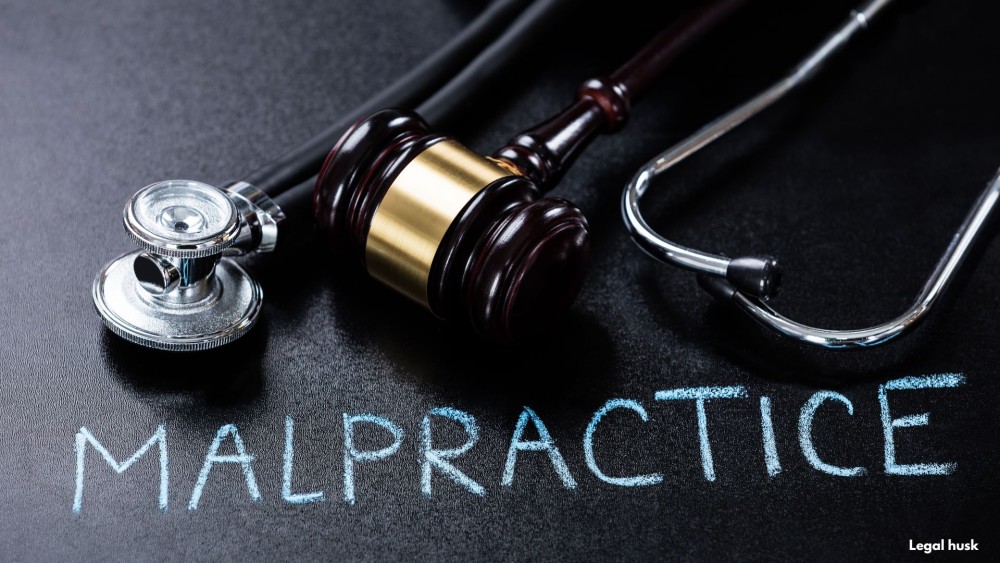Get Your Legal Documents Now!
Whether you are dealing with a complex family matter, facing criminal charges, or navigating the intricacies of business law, our mission is to provide you with comprehensive, compassionate, and expert legal guidance.

Facing a medical malpractice lawsuit? Your first move matters. Learn how to draft a powerful, court-ready answer that protects your rights and challenges false claims.
Medical malpractice lawsuits are high-stakes, combining complex legal and clinical issues. Whether you're a physician, hospital, or healthcare provider, filing an effective answer is your first and best defense. Done right, your response can block liability, preserve defenses, and shift the momentum in your favor.
This guide walks you through how to respond strategically, structure your answer, and use affirmative defenses that stand up in court.
A strong answer addresses every claim, follows court procedure, and sets the tone for litigation. Here’s what to include:
Case Caption – Court name, parties involved, case number.
Admissions and Denials – Respond to each allegation (admit, deny, or state insufficient knowledge).
Affirmative Defenses – Legal reasons why the plaintiff’s claim should fail.
Counterclaims – If applicable, raise claims against the plaintiff.
Prayer for Relief – Request dismissal, costs, or other remedies.
Signature and Verification – Signed by the defendant or attorney, verifying the answer's accuracy.
✅ Pro Tip: Follow jurisdiction-specific court rules on formatting, service, and deadlines (usually 20–30 days).
Affirmative defenses can shield you from liability—even if some allegations are true. Here are the most commonly raised:
“Defendant denies that the care provided deviated from the accepted standard of medical practice.”
Use this to affirm that you followed standard care protocols or acted as a reasonable practitioner would.
“Plaintiff’s injuries resulted from pre-existing conditions and not from any alleged negligence.”
This attacks the link between your actions and the alleged harm—often a make-or-break point.
“Plaintiff’s claim is barred by the applicable statute of limitations under [state law].”
Every state has a time limit for filing malpractice claims. If they miss it, you can move for dismissal.
“Plaintiff was fully informed of the risks and voluntarily consented to the procedure.”
This is particularly useful in surgical or elective procedure cases.
“Plaintiff failed to follow post-procedure medical advice, contributing to the alleged harm.”
Some states allow reduced or barred recovery if the plaintiff shares blame.
You must address each paragraph in the complaint—no skipping or general denials. Here’s how:
Admission: “Defendant admits Plaintiff was treated at XYZ Hospital on January 5, 2023.”
Denial: “Defendant denies all allegations of negligence stated in Paragraph 3.”
Lack of Knowledge: “Defendant lacks sufficient information to admit or deny Paragraph 5 and therefore denies it.”
💡 Best Practice: Deny clearly and specifically—especially for any claims of fault or deviation from standard care.
Consider asserting a counterclaim if:
The plaintiff failed to pay for medical services.
The claim caused reputational or economic harm.
The suit is retaliatory or frivolous.
Use this tactic if:
The plaintiff failed to file an expert affidavit (required in many jurisdictions).
The claim doesn’t meet the legal threshold for malpractice.
✅ Best Practice: Discuss with your legal counsel whether to file these before or along with your answer.
✔ File on time – Courts are strict. Missing the deadline = default judgment risk.
✔ Support your defenses with relevant case law or medical records.
✔ Work with an attorney experienced in healthcare litigation.
✔ Be exact in your language—avoid accidental admissions.
✔ Preserve all documentation, including informed consent forms, clinical notes, and treatment logs.
In a medical malpractice suit, your answer isn’t just paperwork—it’s your first line of defense. A clear, timely, and legally sound response can prevent liability, dismiss weak claims, and protect your professional reputation.
Whether you're a solo practitioner or a hospital group, Legal Husk can help you craft a precise, strategic, and persuasive response to malpractice allegations.
📌 Don’t let errors in your answer cost you the case.
📞 Partner with experts who understand the legal-medical intersection.
👉 Visit:
🔗 legalhusk.com
🔗 legalhusk.com/services
🔗 legalhusk.com/services/civil-litigation
🔗 legalhusk.com/about-us
🧠 Pro Tip: Some states require an affidavit of merit from a medical expert alongside your answer. Make sure to check!
📩
Ready for a court-ready motion at a predictable price? Contact Legal Husk and let us draft your next answer with precision and clarity.
Whether you are dealing with a complex family matter, facing criminal charges, or navigating the intricacies of business law, our mission is to provide you with comprehensive, compassionate, and expert legal guidance.
Comments